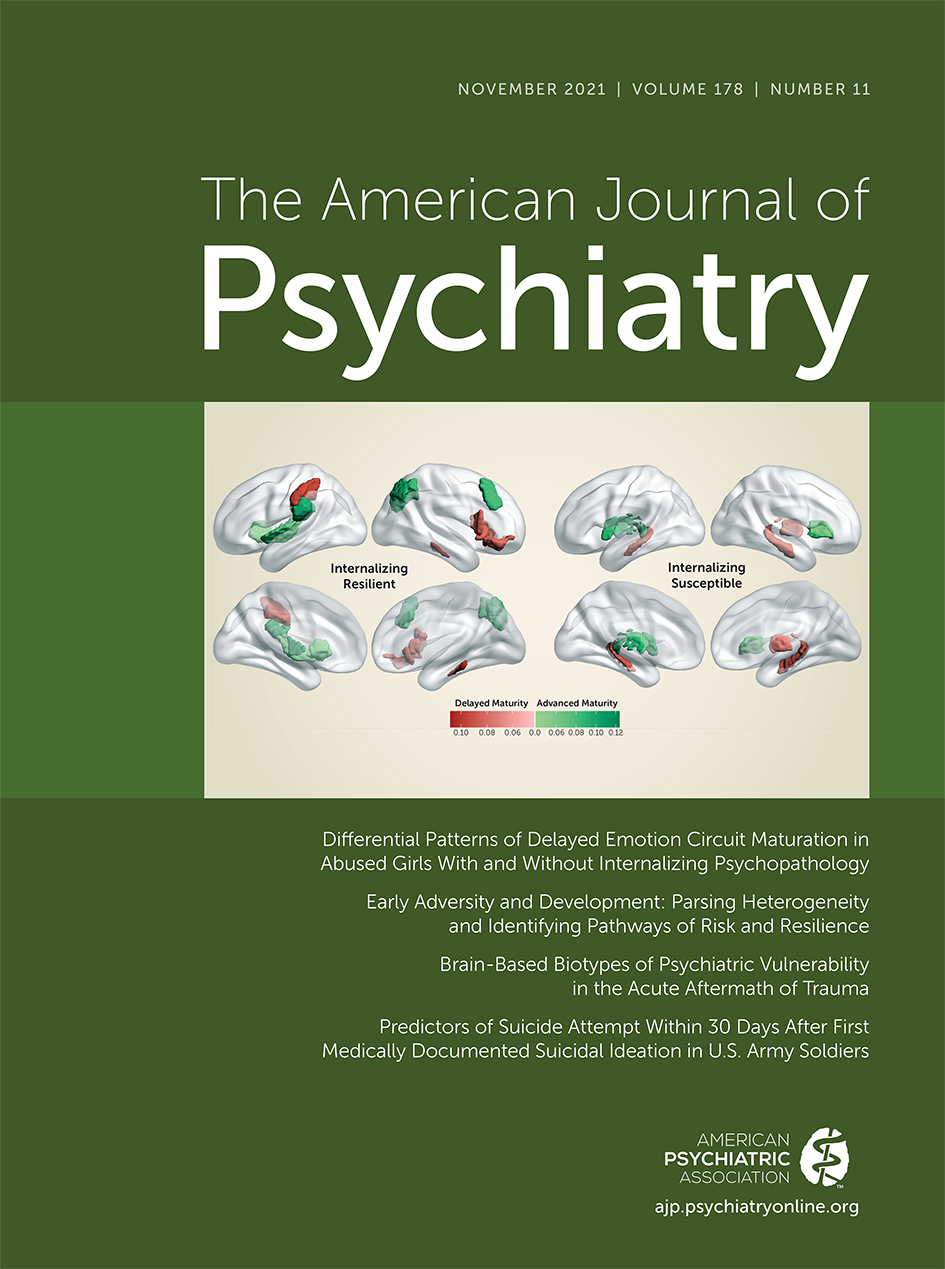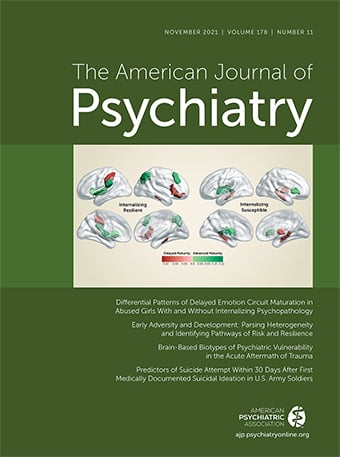This paper by Stevens and colleagues (
7) represents the efforts of a large group of investigators involved in an ongoing multisite longitudinal study focused on understanding the deleterious consequences of trauma exposure. Participants were between 18 and 75 years of age and were recruited from the ER within 72 hours of their traumatic experience. Functional MRI data were obtained using three tasks (a threat-related task, an inhibitory control task, and a reward task) an average of 18 days after enrollment. Follow-up data on the participants were collected for at least 8 weeks. The initial “discovery cohort” (N=69) consisted of participants that experienced motor vehicle trauma. To validate the findings from this group, the researchers used another group of participants as a “replication cohort,” which consisted of 77 individuals that had recently experienced various types of trauma, including interpersonal trauma. Using an agnostic clustering method to analyze the imaging data, the researchers found three imaging clusters that replicated across the discovery and replication cohorts, labeled “reactive/disinhibited,” “low reward/high threat,” and “inhibited.” These statistically determined imaging clusters were then examined with respect to outcomes. Of interest, there was a relation between clusters and PTSD symptoms such that the reactive/disinhibited group had the greatest amount of PTSD symptoms. There also was an effect associated with the longitudinal modeling of anxiety symptoms, which were also higher in the reactive/disinhibited cluster. Importantly, when accounting for PTSD symptoms prior to the current traumatic exposure, the relation between PTSD symptoms and clusters was no longer significant. However, the relation between longitudinal anxiety and clusters remained significant when accounting for pretrauma anxiety severity. Taken together, these findings suggest the possibility that functional MRI data acquired shortly after a traumatic event, in combination with machine learning techniques, can be helpful in predicting psychological and psychiatric outcomes during the posttrauma period. The findings point to the reactive/disinhibited group as the “biotype” that is most likely to develop substantial PTSD and anxiety symptoms. At a neural level, the reactive/disinhibited cluster was associated with activation of threat- and reward-related regions (insular cortex, dorsal anterior cingulate cortex, nucleus accumbens, median raphe nucleus, and the ventral tegmental area) with little activation of regulatory regions associated with the expression of threat or inhibition. The authors also suggest that the inhibited cluster might be associated with active coping, as this cluster was characterized by increased activity in the ventromedial prefrontal cortex and the hippocampus, regions that have previously been associated with resiliency. In his editorial (
8), Dr. David Knight from the University of Alabama points out the important and somewhat unique features of this study, which include using multiple neurocognitive measures to assess brain function, the prospective longitudinal design linking brain function to transdiagnostic outcomes, and the analytic methodology used as a prototype for future work aimed at linking psychiatric outcomes to biotypes.

